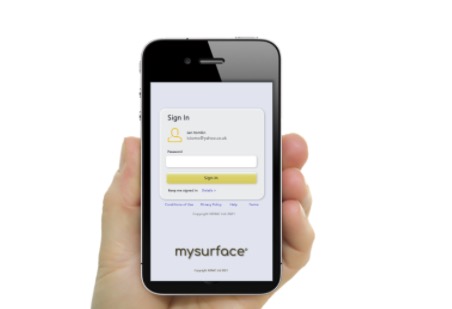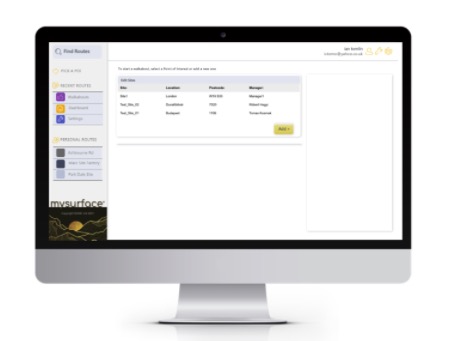EXPERIENCE ENCANVAS IN 60-MINUTES!
We're always happy to walk you through Encanvas no matter where you are in the world.

Change Management Software is a category of application software used to facilitate enterprise change and improvement. It helps organizations to adapt to change by anticipating needs, modifying or displacing incumbent software applications. In the context of application software development, change management involves tracking and managing changes to artifacts, such as code and requirements as part of software development life-cycle (SDLC).
Enterprise software created for Systems of Record use cases – such as Financial, Manufacturing Resource Planning, Human Capital Management, and Customer Relationship Management software – is designed to impose best practice approaches to commonly performed business-critical processes within the enterprise. It is unusual for Systems-of-Record applications to deliver a competitive advantage because they fundamentally install common blueprints and ways of working that all competitors in a market end up supporting. In contrast, change management software exists to stay in-tune with enterprise needs for information processing as business models evolve over time.
The digital age has seen a dramatic increase in the pace of change in business model designs. Whereas firms a decade ago wouldn’t change their business model more than once in a decade, today, organizations will review business model designs at least once every two years, if not more.
Change Management Software equips individuals or departments charged with business improvement – and command over the change management process within an enterprise – with the necessary tools to evolve information systems and to support the change process itself. It brings the following benefits to adopting businesses:
Since 2007, the enterprise computing industry has been progressively leveraging cloud computing technologies to make applications more accessible and available to user communities. The use of cloud hosting applications has made it possible for applications to serve markets and users 24 hours a day, 7 days a week. One of the challenges of porting applications to the cloud has been the risk of data loss. Data security has become an increasing concern to organizations because of their greater reliance on data to continue business operations. Additionally, the increased compliance risks of processing personally identifiable information (PII) have made organizations more concerned about the security risks of cloud-deployed applications. Nevertheless, most application platforms today are deployed on cloud computing platforms as an applications-Platform-as-a-Service ([aPaaS]).
Encanvas is an enterprise software company that specializes in helping businesses to create above and beyond customer experiences.
From Low Code to Codeless
Better than code-lite and low-code, we created the first no code (codeless) enterprise application platform to release creative minds from the torture of having to code or script applications.
Use Encanvas in your software development lifecycle to remove the barrier between IT and the business. Coding and scripting is the biggest reason why software development has been traditionally unpredictable, costly and unable to produce best-fit software results. Encanvas uniquely automates coding and scripting. Our live wireframing approach means that business analysts can create the apps you need in workshops, working across the desk with users and stakeholders.
When it comes to creating apps to create a data culture and orchestrate your business model, there’s no simpler way to instal and operate your enterprise software platform than AppFabric. Every application you create on AppFabric adds yet more data to your single-version-of-the-truth data insights. That’s because, we’ve designed AppFabric to create awesome enterprise apps that use a common data management substrate, so you can architect and implement an enterprise master data management plan.
Encanvas supplies a private-cloud Customer Data Platform that equips businesses with the means to harvest their customer and commercial data from all sources, cleanse and organize it, and provide tooling to leverage its fullest value in a secure, regulated way. We provide a retrofittable solution that bridges across existing data repositories and cleanses and organizes data to present a useful data source. Then it goes on to make data available 24×7 in a regulated way to authorized internal stakeholders and third parties to ensure adherence to data protection and FCA regulatory standards.
Encanvas Secure and Live (‘Secure&Live’) is a High-Productivity application Platform-as-a-Service. It’s an enterprise applications software platform that equips businesses with the tools they need to design, deploy applications at low cost. It achieves this by removing coding and scripting tasks and the overheads of programming applications. Unlike its rivals, Encanvas Secure&Live is completely codeless (not just Low-Code), so it removes the barriers between IT and the business. Today, you just need to know that it’s the fastest (and safest) way to design, deploy and operate enterprise applications.
Learn more by visiting www.encanvas.com.
Mason Alexander is a senior consultant specializing in helping organizational leadership teams to grow by implementing enterprise software platforms that improve data visibility, process agility; and organizational learning – creating an enterprise that learns and adapts faster. He writes on subjects of change management, organizational design, rapid development applications software, and data science. He can be contacted via his LinkedIn profile.

Is it progress if a cannibal uses a fork? Stanislaw Jerzy LecIs
It’s a funny thing. When leadership teams get wrapped up in software app selection discussions, the PURPOSE of technology can get so easily lost. It’s as if, the more technology options and possibilities come into the foreground, the more they become the SUBJECT, not a CONTRIBUTION to the desired outcome.
Particularly when enterprises are considering a digital transformation, this technology ‘target fixation’ is a real issue.
Leaders have to be technology aware these days – DIGITAL TRANSFORMATION is too big for the CTO alone.
Businesses today live on data and their relationships with customers and suppliers exist as data flows through a software conduit. The technology organizations use defines them to their customers. It also makes a huge impact on profitability (i.e. how efficiently an organization translates its customer value into shareholder returns).
I am always surprised by how many experienced sales and marketing leaders say they are awash with software apps and robotic solutions for task automation. Each of these tools had been selected for doing a particular task or job really well – and I’m sure they do – but the unintended consequential impact of using all of these tools was a paucity of technology that did little more than distract from their core agenda.
The world of business computing has shifted from a discussion around best-of-breed apps to solve particular needs, to looking more holistically at business models and how enterprises can maximize customer experience and shareholder returns with a single, unifying platform.
There are several ways leadership teams can tackle the automation and ‘digitalization’ of their enterprise.
One option is to start from the ground-roots, looking at the task-related problems of work activities and lever in new tech-tools like Robotic Process Automation (RPA) to make improvements one task at a time. The challenges this ground-up approach fosters include a lack of control afforded to IT and compliance teams over data, the increased risk of silos of data and activities being created, and the probability that any step-change in workflow design (or new tools and mechanisms) could obviate the need for these low-level tasks completely! There is a big risk that internal (and external) sponsors of technology tools will FIND more and more task automation opportunities to justify the time and spend on solutions, distorting how resources are being used to achieve departmental ends not enterprise level outcomes.
There are several ways leadership teams can tackle the task automation and ‘digitalization’ of their enterprise.
One option is to start from the ground-roots, looking at the task-related problems of work activities and lever in new tech-tools like Robotic Process Automation (RPA) to make improvements one task at a time.
The challenges this ground-up task automation approach fosters include a lack of control afforded to IT and compliance teams over data, the increased risk of silos of data and activities being created, and the probability that any step-change in workflow design (or new tools and mechanisms) could obviate the need for these low-level tasks completely!
There is a big risk that internal (and external) sponsors of technology tools will FIND more and more task automation opportunities to justify the time and spend on solutions, distorting how resources are being used to achieve departmental ends not enterprise level outcomes.
Another task automation option is to explore your current use of hard-copy documents and any document workflows.
With document and business process management solutions, enterprises are able to turn their traditional paper-based workflows into a digital (superior) alternative, sometimes installing machine-to-machine processing and eradicating the need for humans to take on the role of ‘sub-processors’ or ‘glue-ware.’
How is your enterprise moving ahead with its digital transformation? And is it starting at the right level?
Unless organizations have established a digital transformation governance team, the probability is that task automation falls to departmental managers and portfolio holders that are rewarded on the performance of their silo. Inevitably, when in search of quick-wins, the likely consequence of this lack of top-down control is that middle-managers will focus on plugging gaps and short-terms economies rather than step back and revisit the big picture.
Equipping teams and individuals with the SaaS apps they need (or like to use) might well be creating far too many rabbit holes for leadership teams to get lost in. Re-visiting business model designs and then considering a digital orchestration using a unifying applications design and deployment platform may sound like a longer-term agenda but the alternatives may just turn task automation into a task itself.

Ian Tomlin is a management consultant and strategist specializing in helping organizational leadership teams to grow by telling their story, designing and orchestrating their business models, and making conversation with customers and communities. He serves on the management team of Encanvas and works as a virtual CMO and board adviser for tech companies in Europe, America and Canada. He can be contacted via his LinkedIn profile or follow him on Twitter.
Now read:
IT leaders are challenged to keep innovating while over 60% of IT budgets remain focused on keeping the lights on. Consumers and workers alike expect apps that ‘just work’. They expect IT innovators to rapidly source always-on, powerful, and instantly intuitive solutions to capture, access, manage, and share information.
To keep pace with the need for near-constant digital re-invention, a new kind of IT rapid DevOps team is needed and a ‘fail-fast’ prototyping approach that in itself requires a high-productivity applications platform to support it.
Management teams recognize that they can’t ignore the importance of digital technologies and their influence on markets and business models. Organizations have a stark choice; to embrace digital, or die.
In this new digital market reality, enterprises are faced with the option to buy an existing digital platform and ecosystem to support their business model orchestration, or build their own. In most cases, the only way for organizations to achieve a competitive edge is to do the latter. Recognition of this change makes IT an intrinsic core competency of any business, not a support department only there to keep the lights on.
McKinsey & Co. suggest companies with digital platforms enjoyed an annual boost in earnings before interest and taxes (EBIT) of 1.4 percent, compared with the 0.3 percent gains of non-players. They go on to state that performance effects are cumulative, with EBIT improvements adding to early-year gains, so over a five- year period, platform players may capture an additional 10 percent in EBIT growth—a company’s 2 percent EBIT growth, for example, would increase to 2.2 percent in year five.
‘The right digital-platform strategy’, Insights Report, McKinsey & Co, May 2019
Enterprises are creating DevOps teams to support and speed up their digital transformation, embracing digital innovation, enabling them to reduce operation costs. Sometimes, these teams are carved out of existing in-house resources and continue to report to the IT department, but in other cases, Chief Digital Officer (CDO) roles are appointed to ensure a new culture is stitched into the design of this key enabling team.
It’s only an opinion, but my experience of two-speed team structures for digital transformation hasn’t been satisfactory. There’s a risk that some great people get left in the ‘slow-speed’ IT team that end up feeling disenfranchised. Also, the leadership of the two teams can end up squabbling. creating disruption and distractions that are at best unhelpful. That said, if both teams accept that their roles are important, and the right personalities are placed in the right seats, perhaps it could work.
My preference is a third project structure. It’s what German companies call the ‘Organization Department’. It’s a department responsible for managing change – a continuous improvement team that includes IT, analysts, legal, HR, marketing,and program management competencies in a single unifying team that sits within the body corporate led not by IT but the CEO.
Why this structure? Because agility in business these days is a process. It has a life-cycle like any other process. Organizations must accept that change is not an intervention, it’s an always-on aspect of organizational performance.
%
%
%
%
%
%
Source:
1. Altimeter Group Digital Transformation Survey
2. University of Oxford
3. Gartner (2112)
4. Gartner (2112)
5. Oxford Economics and SAP (2012)
6. MIT Sloan Mgmt. Review
Without the right tool kit, it’s not sensible or practical to consider in-house development of the technology you’ll need to orchestrate your business model. When businesses continue to use manual coding of apps, they inevitably fall foul of its inherent weaknesses.
Encanvas software, and similar tools like Mendix, ServiceNow, and OutSystems equip businesses with the ability to design, deploy and run their own self-authored apps. Encanvas is specifically engineered to support the project process for orchestrating business models through a series of software developments modules. This way, it removes the technology obstacles of creating enterprise-scale applications, such as coding, integrating, and testing new applications.
a fundamental principle of rapid app development is that it’s best to start small with the minimum set of requirements and get something working so it starts delivering value. The alternative to this is building a mammoth software requirements specification (SRS) document that conjures up so many ‘nice-to-have’ features that it becomes impossible to economically produce. When creating a best-fit app module, involving stakeholders (ie Customers, Partners, Users) directly in the design process always works better.
Removing code and presenting WYSIWYG results in a workshop environment is the best way to do this.
A Live Wireframe is a fully functioning application prototype (pre-UAT) that proves the red-flag issues that the project team determines as being the biggest risks to project success. The task of producing a Live-Wireframe is performed by having stakeholders work ‘across-the-desk’ with a business analyst who creates the resulting live-wireframe design in near-real-time.
As soon as line-of-business stakeholders get presented with a screen of code, they shy away from feeling they should contribute to the development process – it’s just too overwhelming. With Live Wireframes, stakeholders get to see during the design workshop, the live system they’re going to be using in all of its glory. Seeing instant results makes an enormous difference to project success, but it requires built-for-purpose development tools; a unifying design and deployment ecosystem that removes the need for IT to master a dozen different technology components before they can produce any outcome.
Two-Speed IT is unnecessary when enterprises create an Organization Department and install a culture of prototyping by employing Live Wireframes. This way digital platform design and management becomes an embedded capability of the enterprise, ensuring agility is seen as a constant (and is appropriately resourced).

Author
Ian Tomlin is a marketer, entrepreneur, business leader and management consultant. His passion is to help make great ideas happen. Relentlessly optimistic about the potential of technology for good, Ian’s 30+ year career has focused around the intersect of strategy, technology and marketing. He writes on subjects including enterprise computing and organizational design. He also works as a consultant and advisor to the executive teams of PrinSIX Technologies, Answer Pay and INTNT.AI, helping to rethink their marketing in order to tell their brand story.
Ian has founded a series of successful businesses including NDMC Ltd (2003), Encanvas (2006), and Newton Day Ltd (2019). He has written books, articles and guides on brand, digital transformation, enterprise applications, data science, workforce management, and organizational design. He can be reached via LinkedIn or Twitter.

Businesses around the world are looking to seize opportunities that the digital era brings. Online communities offer new potential to create wealth. But how do enterprises harness technologies like big data and the Internet of Things (IoT) to turn data into sustainable value for your business?
Digital Transformation is too big and hairy for IT to be expected to deliver it alone. The problem is, when ‘normal people’ see code on a screen they fee disenfranchised and unable to contribute to software development discussions. This is why low-code digital transformation is the way to go.
Before considering the tooling though, it’s well worth taking a step further back. Considering IT changes without first re-visiting the design and fit of business models can result in limited returns from investments in IT.
‘A business model determines how the created customer value of an enterprise is converted into value for shareholders. The mechanism that discharges this function is sometimes called the ECONOMIC ENGINE, but fundamentally its about people, process, technology and data.’
Ian Tomlin, CEO – Newton Day
Examples of mobile and web desktop applications designed and deployed on Low-Code digital transformtion platform


A low-code digital transformation agenda recognises the key role technology has to play in fashioning results. Using a low-code, or better still ‘no-code’ platform means business stakeholders and system users get to play a key role in software development decisions. It gives EVERY relevant business stakeholder a say in how to turn your business model into technology solutions, most of all the CEO.
When Chief Information Officers or newly appointed Digital Directors get handed the task of ‘making a digital transformation work’ it can prove to be a poisoned chalice. Ultimately, it’s the CEO and not IT leaders that should have the biggest say in what business models should apply to an enterprise, and how best to orchestrate them.
The end-game for CEOs is to build or buy a digital platform and ecosystem that represents the digital interface to customers, suppliers and partners. Within this same ecosystem expect to see technology building blocks to automate business processes, although a fundamental requirement of ecosystems is to make back-office processes more transparent. Companies like Amazon are demonstrating the effectiveness of built-for-purpose digital platforms to pass over data entry duties to customers, removing many of the back-room processes that traditional suppliers continue to fulfil (unsurprisingly, Amazon doesn’t use Salesforce.com to manage its CRM; its own customer ecosystem removes the need for sales teams to key-fill data).
One of the challenges CEOs face is understanding the complexities of modern technology, not just in appreciating the applicability of technology for their business models, but during the design and deployment phase when it’s so important that ‘the business’ drives ‘IT’.
This is driving demand for a new kind of agile Digital Platform development tool-set that removes the technical barriers and risks to authoring the kind of Digital Ecosystem that can fully orchestrate a business model.
%
%
%
%
%
%
Source:
1. Altimeter Group Digital Transformation Survey
2. University of Oxford
3. Gartner (2112)
4. Gartner (2112)
5. Oxford Economics and SAP (2012)
6. MIT Sloan Mgmt. Review
What form does this new kind of Digital Transformation Platform take?
There are some obvious features we’ve described here; more in terms of what such an ecosystem needs to do in order to orchestrate business models, rather than a technical list.
Platforms need a unifying codeless ‘building block’ approach to development that’s fast and affordable; so you can make mistakes and ‘fail fast’
Fully leverages your existing data assets and makes light work of cleansing data when you start to put it to work!
Modern look and feel – Nobody wants to struggle with old fashioned User Interfaces that people can only access when they’re at their desk’
You’d expect to leverage big data, artificial intelligence, IoT, data visualizations, software robots…!
It will be running business critical apps so it needs to be resilient, scalable and ultra secure – and it needs to be on the cloud!
Easy to deploy, easy to learn and use, not at risk of creating legacy issues down the line – even better if your IT team trusted it and liked using it!
One might argue that it begins with another look at the current business model. Is the incumbent business model maximizing returns to shareholders from the customer value being generated by the enterprise? Furthermore, is the customer value sufficient to keep the enterprise competitive?
One challenge is working out how to articulate the business model into outcomes, capabilities, processes and mechanisms. One of the things the team at Newton Day helps with are Sprint Workshop programs to get through this ‘recognition of needs’ phase as expediently as possible without compromising on accuracy and detail. It’s essential that enterprises really fundamentally understand who their customers are, what they value and what it takes to deliver results.
Next, a project team and plan has to be constructed.. This should comprise of a blended team of organizational design, HR, risk, legal, IT, marketing, analyst and program management experts. Whether these individuals are contracted in, or are assigned from existing resources, it’s better to measure their contribution as a team and reward it. In my opinion, the best governance model for digital platform projects is to have a regular Project Leadership Group (PLG) of senior execs reporting directly into the board and then support this with a Project Steering Group (PSG).
Once this stage is complete, the work to develop the technology ecosystem begins. This starts with stakeholder workshops and normally, having mapped out the bigger game plan, projects focus on delivering a point of detail; an aspect of the current business model that can be improved that is seen to be a quick win. Gaining early results gives everyone inside and outside the project team confidence in the value of the program.
Now, back to the original point: Can a business expect to do all of this without the CEO leading it? Or, put another way, would a CEO not want to be leading such a strategically important initiative that will be the source of the enterprises income in future years? I would argue not.

Ian Tomlin is a management consultant and strategist specializing in helping organizational leadership teams to grow by telling their story, designing and orchestrating their business models, and making conversation with customers and communities. He serves on the management team of Encanvas and works as a virtual CMO and board adviser for tech companies in Europe, America and Canada. He can be contacted via his LinkedIn profile or follow him on Twitter.
If you’re not already using a code-less design environment then maybe you should see it for yourself. Why not request a fire-side chat and experience ‘across the desk’ applications design close-up with one of our experienced consultants?